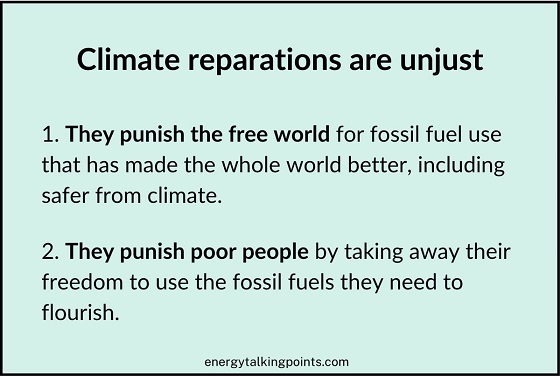Brownstone Institute
The Post-Ideological Age
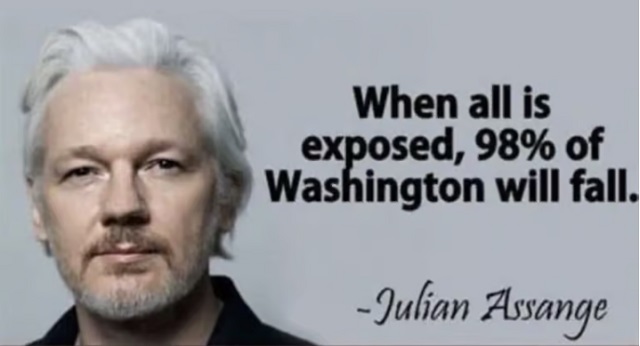
Fr0m the Brownstone Institute
By
Conventional wisdom has it that the US and much of the Western world has polarized into right and left. These tribes are hard-core and share mutual loathing. That model of understanding pervades all popular media and consumes the culture, such that everyone feels the need to choose. It’s simple, harkens back to Cold War binaries, drums up media attention, and further divides the population in ways that benefit the leaders of both sides.
The reality underneath the surface is otherwise. The old ideologies are fractured and most serious people are trying to piece together something other than the old frameworks. The turning was slow at first, probably beginning at the end of the Cold War, but culminated in the response to the Covid crisis. Despite the claim, left and right have never been more scrambled. The reassembling is also occurring right now but it looks much more like the ruling class vs everyone else.
The Covid policy response confounded every ideological outlook. For the center-left that had always trusted public health, seeing the principles of 100 years shredded in an instant was a shock. For the center-right, to see the Republicans in power acquiesce to the idea of “shutting down the economy” was truly hard to believe. The concerns of the traditional civil libertarians, including free speech, were trampled. Those who had traditionally rallied around the rights and interests of business big and small watched with horror as Big Business joined the lockdown armies and small businesses were crushed. The believers in science as a standard of truth to rise above it all were astonished to see every journal and every association compromised by state priorities.
As for nearly everyone who believed that we still lived in a representative democracy, in which elected leaders held the power, they were astonished to watch as politicians became fearful and powerless over the many layers of entrenched bureaucratic experts in government, the deepest layers of which seem to be taking charge over traditional civilian agencies. The people who had always regarded pharma as constantly foiled by the FDA watched in amazement as these vaccine-wielding powerhouses called the shots over all approval processes.
As the dissidents began to cut through the censorship that was almost immediate in the spring of 2020, we discovered a fascinating thing. Our traditional allies were not with us. I’ve heard this from the right, left, and libertarians all. Whether in academia or media, no one was speaking out in ways we might have expected. As Naomi Wolf put it in a private seminar, in words that shocked me at the time, “all our past alliances, institutions, and networks have collapsed.”
There was something about the excuse for the imposition of sudden despotism that seemed to confound all the main voices on all sides. That was a clue that something was very wrong, and it was more than betrayal. It was a sign that we had profoundly misunderstood the intellectual lay of the land.
One might have supposed that church leaders would protest the closing of houses of worship. For the most part, they did not. It was the same with old-line civil liberties organizations. They fell silent. The Libertarian Party had nothing to say and neither did most libertarian think tanks; even now the party’s standard bearer was fully in with the lockdown program when it mattered. The left fell in line and so did the right. Indeed, major “conservative” outlets weighed in on behalf of lockdowns and vaccine mandates – same as the traditional “liberal” outlets.
And what did the dissidents have in common? They were concerned with evidence, science, calm, and traditional law and liberty. Crucially, they were in a career position to say something about the problem. That is to say, most of the dissidents were not in a position of dependency on the major systems of power and influence, whether in the nonprofit world, academia, Big Media and Tech, and otherwise. They spoke out because they cared and because they were in a position to do so.
Gradually over the months and years, we have found each other. And what have we found? We’ve discovered that people who were seemingly on different sides solely due to branding of the past had far more in common than we thought.
And as a result, and partly because we were now in a position to trust each other more than we might otherwise, we began to listen to each other. More importantly, we have begun to learn from each other, discovering all the ways in which our previous tribal connections had blinded us to realities that we had right before us the whole time but we simply could not see.
As an example, many on the left who had long defended the rise of government power as a check on the depredations of private business were amazed to see these very powers turned against the classes of people whose interests they had long defended, namely the poor and working classes. If nothing else, the pandemic response was a prime example of class exploitation of the people on behalf of the economic, cultural, and political elites.
Conversely, those of us who had long championed the rights of business were forced to look squarely at the reality that the largest corporations, heavily consolidated after decades of loose credit, were working so closely with government as if there really was no difference between the public and private sector. Indeed it was hard to tell the difference.
Those who had long championed the rights of media against elite attacks discovered that there really was very little difference between mainstream corporate media and government public relations departments, who in turn were carrying water for the most powerful corporations that stood to gain trillions from the whole caper.
Watching all this unfold in real time was an astonishing experience. Above all else, it was intellectually disorienting. And so those of us who care about holding an accurate understanding of the world had to regroup, draw on what we knew to be true which was confirmed but rethinking postulates and dogmas we assumed to be true but which turned out to be false in the emergency.
Yes, these days have ended, at least for now, but they leave a vast carnage of old ideological systems in the dustbin of history. Part of the job of Brownstone Institute, and perhaps even our main job, is to figure out the operations of the world in a realistic way, backed by evidence and the best theory, toward finding our way back to the fundamental principles that have built civilization over the centuries. That goal is inseparable from the very idea of rights, and public institutions that are responsive to the people.
What we have learned is that our ideological system not only didn’t protect us; they could not even fully explain the strange realities that unfolded.
Everyone in the dissident community agrees fully with the main theme of The Lord of the Rings: power is the great killer of the human spirit. Our job is to figure out who has that power, how to dismantle it, and the right path to preventing something like this from ever happening again. And by “something like this,” we mean everything: the exploitation, the restrictions on peaceful behavior, the agency capture and corporate aggression, the censorship and betrayal of the promise of the information age, the crushing of property rights and enterprise, and the violation of bodily autonomy.
In our quieter moments, all of us are wondering how we could have been so confused about the ideological bifurcations of the past. Why were we so entrenched in them? And to what extent did those ideologies create an artificial veneer over the growing problems underneath the binary overlay? This was surely the case and it went on for decades.
We think back now on populist movements of the past and see how many of them, whether ostensibly from the right or left, ultimately came from the same place, the perception that the system was being run by something or someone other than is being advertised. The Occupy Wall Street movement ultimately came from the same instincts as the Truckers Revolt in Canada that came some twelve years later, and yet one is called left and one is called right.
It is impossible to separate the BLM protests and sometimes riots from reaction against being locked up for the better part of two months from a virus that was known to be a threat mainly to the aged and infirm. That unleashed predictable anger that was often deeply destructive. And the shock and outrage at the vaccine and mask mandates stemmed from the same basic impulse: the human desire not to live in cages of someone else’s creation but rather be in charge of our own bodies and lives.
It’s the same with the anti-censorship movements today, and the growing nationalist movements around the world that wonder whether or not nation-states even have authority anymore to control the massive and hegemonic global forces that seem to be pulling the strings behind the scenes.
All these shifts in the firmament of opinion and politics come from the same place: the desire to take back control of our lives.
This means many things. It includes causes that many on the right have neglected: food freedom, medical freedom, corporate consolidation, the rise of the corporate state, private-sector censorship pushed by agency outsourcing, the militarization of civilian agencies, and deep-state power. And the same is true for the honest left, newly aware of the corruption of government, the rights of religious freedom and free enterprise, the evils of central banking and financial surveillance, and far more.
Looking back, much more makes sense. Consider the domestic discontent in the US that culminated in the implausible election of Donald Trump in 2016, an event that confounded the elite classes in media, government, tech, and pharma. Trump stood in symbolic opposition to it all and took some minor steps toward rolling back the empire at home and abroad. He was joined in this effort by political trends in the UK (with Brexit) and Brazil (with the rise of Bolsonaro). A new flavor of populism seemed to be on the rise.
There were many attempts to crush it here and abroad, starting far back but intensifying after 2016. The culminating moment was the Covid regime which was global in scope and involved a “whole of society” approach as if to say: we and not you are in charge. Look what we can achieve! Observe how little you really matter in the scheme of things! You thought the system worked for you but it is designed and run by us!
Is this sustainable? It is highly doubtful, at least not in the long term. What is desperately needed now is a paradigm of understanding that transcends the tribal alliances of the past. It really is the ruling elite vs. everyone else, an outlook that blows apart ideological divisions of the past and cries out for a new comprehension of the present moment, not to mention new plans of action. And this remains true regardless of the outcome of the election in November.
In the language of Thomas Kuhn, our times have seen the decisive collapse of old paradigms. They have fallen under the weight of too many anomalies. We have already entered into the pre-paradigmatic stage that seeks a new and more evidence-based orthodoxy of understanding. The only way we can get there is to enter into and enjoy the clash of ideas, in a spirit of freedom and learning. If nothing else, these are exciting times to be alive and active, an opportunity for all of us to make a difference for the future.
If you are interested in supporting the work of Brownstone Institute – the fellowships, events, books, retreats, and ongoing journalism and research – we invite you to do so. Unlike so many others, we have no government or corporate backing and depend entirely on your willingness to help. This is how we save intellectual integrity and how we save the world.
Brownstone Institute
The Most Devastating Report So Far
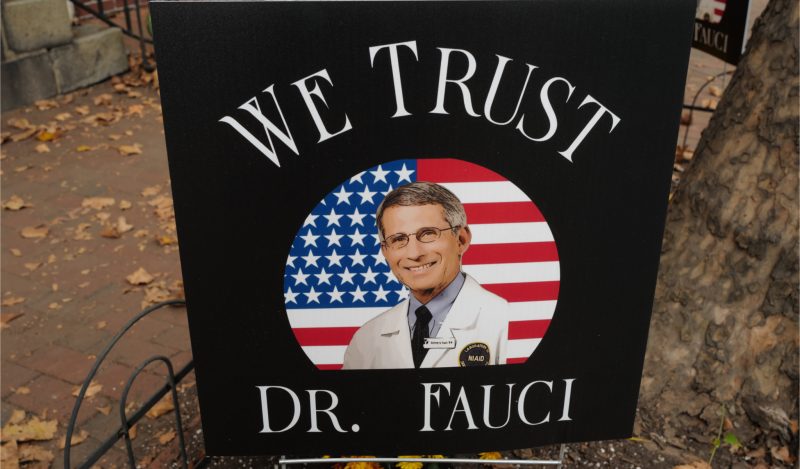
From the Brownstone Institute
By
The House report on HHS Covid propaganda is devastating. The Biden administration spent almost $1 billion to push falsehoods about Covid vaccines, boosters, and masks on the American people. If a pharma company had run the campaign, it would have been fined out of existence.
HHS engaged a PR firm, the Fors Marsh Group (FMG), for the propaganda campaign. The main goal was to increase Covid vax uptake. The strategy: 1. Exaggerate Covid mortality risk 2. Downplay the fact that there was no good evidence that the Covid vax stops transmission.
The propaganda campaign extended beyond vax uptake and included exaggerating mask efficacy and pushing for social distancing and school closures.
Ultimately, since the messaging did not match reality, the campaign collapsed public trust in public health.
The PR firm (FMG) drew most of its faulty science from the CDC’s “guidance,” which ignored the FDA’s findings on the vaccine’s limitations, as well as scientific findings from other countries that contradicted CDC groupthink.
The report details the CDC’s mask flip-flopping through the years. It’s especially infuriating to recall the CDC’s weird, anti-scientific, anti-human focus on masking toddlers with cloth masks into 2022.
President Biden’s Covid advisor Ashish K. Jha waited until Dec. 2022 (right after leaving government service) to tell the country that “[t]here is no study in the world that shows that masks work that well.” What took him so long?
In 2021, former CDC director, Rochelle Walensky rewrote CDC guidance on social distancing at the behest of the national teachers’ union, guaranteeing that schools would remain closed to in-person learning for many months.
During this period, the PR firm FMG put out ads telling parents that schools would close unless kids masked up, stayed away from friends, and got Covid-vaccinated.
In March 2021, even as the CDC told the American people that the vaxxed did not need to mask, the PR firm ran ads saying that masks were still needed, even for the vaxxed. “It’s not time to ease up” we were told, in the absence of evidence any of that did any good.
In 2021, to support the Biden/Harris administration’s push for vax mandates, the PR firm pushed the false idea that the vax stopped Covid transmission. When people started getting “breakthrough” infections, public trust in public health collapsed.
Later, when the FDA approved the vax for 12 to 15-year-old kids, the PR firm told parents that schools could open in fall 2021 only if they got their kids vaccinated. These ads never mentioned side effects like myocarditis due to the vax.
HHS has scrubbed the propaganda ads from this era from its web pages. It’s easy to see why. They are embarrassing. They tell kids, in effect, that they should treat other kids like biohazards unless they are vaccinated.
When the Delta variant arrived, the PR firm doubled down on fear-mongering, masking, and social distancing.
In September 2021, CDC director Walensky overruled the agency’s external experts to recommend the booster to all adults rather than just the elderly. The director’s action was “highly unusual” and went beyond the FDA’s approval of the booster for only the elderly.
The PR campaign and the CDC persistently overestimated the mortality risk of Covid infection in kids to scare parents into vaccinating their children with the Covid vax.
In Aug. 2021, the military imposed its Covid vax mandate, leading to 8,300 servicemen being discharged. Since 2023, the DOD has been trying to get the discharged servicemen to reenlist. What harm has been done to American national security by the vax mandate?
The Biden/Harris administration imposed the OSHA, CMS, and military vax mandates, even though the CDC knew that the Delta variant evaded vaccine immunity. The PR campaign studiously avoided informing Americans about waning vaccine efficacy in the face of variants.
The propaganda campaign hired celebrities and influencers to “persuade” children to get the Covid vax.
I think if a celebrity is paid to advertise a faulty product, that celebrity should be partially liable if the product harms some people.
In the absence of evidence, the propaganda campaign ran ads telling parents that the vaccine would prevent their kids from getting Long Covid.
With the collapse in public trust in the CDC, parents have begun to question all CDC advice. Predictably, the HHS propaganda campaign has led to a decline in the uptake of routine childhood vaccines.
The report makes several recommendations, including formally defining the CDC’s core mission to focus on disease prevention, forcing HHS propaganda to abide by the FDA’s product labeling rules, and revamping the process of evaluating vaccine safety.
Probably the most important recommendation: HHS should never again adopt a policy of silencing dissenting scientists in an attempt to create an illusion of consensus in favor of CDC groupthink.
You can find a copy of the full House report here. The HHS must take its findings seriously if there is any hope for public health to regain public.
Brownstone Institute
The Revolution of 2024: A Rare Victory for Anti-Establishment Fury

From the Brownstone Institute
By
The sudden coming together of three great sectors of anti-establishment fury – MAGA, MAHA, and DOGE – in the last two months of the election of 2024 is one for the ages.
People are out and about, smiling at each other. It’s been true since the morning after the election, the results of which defied every prediction. Who doesn’t like to see the smug elites who have ruled the world for five awful years taken down a peg?
More than that, there are hints of a return to sanity. Mainstream advertisers are suddenly returning to X, putting their economic interest above their tribalist loyalties. The editor of pro-lockdowns Scientific American, which had long blessed totalitarian measures as true science, has resigned.
The attempt to pillage InfoWars and give it to The Onion has been reversed by a federal judge. That might be a fluke or might not be: maybe the lawfare is dialing back too. The cabinet of the incoming administration is being filled by voices that were fully censored for years. Employees are reportedly packing their bags at the FDA and other agencies.
Mainstream news commentators are sputtering around with less bravado than they have shown in years. CNN is firing major personalities.
Trump is talking about abolishing the income tax and granting $10K in tax credits per homeschooled child, not to mention blowing up college accreditation systems, among other sweeping changes.
The American Bastille day is coming, not only freeing the political prisoners of January 6 but also many of the unjustly persecuted including Ross Ulbricht, Roger Ver, and Ian Freeman, among so many others. That will be a day of rejoicing.
Oh, and peace seems to have broken out in some contentious areas of the world, for now.
What is happening? This is not the usual transfer of the resident of the White House. This is starting to look like an actual transfer of power, not just from Biden to Trump but from the permanent government – ensconced in many sectors – that has been long in hiding to an entirely new form of government responsive to actual voters.
As it turns out, there was no late surge for Kamala Harris. All the polls were wrong, and the rest was media blather. What was correct were the betting odds on Polymarket, and only days later, the FBI raided the 26-year-old founder’s home and confiscated his phone and laptop.
There are still many millions of missing voters, people who supposedly showed up for Biden in 2020 but stayed home this time. Meanwhile, there has been a historic shift in all races, ethnicities, and regions, with even the possibility of flipping California from blue to red in the future.
After decades of academic slicing and dicing of the population according to ever more eccentric identity buckets involving race, ethnicity, gender, and sexual interest, along with countless thousands of studies documenting deep complexity over intersectionality, the driving force of the election was simple: class, and the few intellectuals and some wealthy entrepreneurs who understand that.
The division was not really left vs right. It was workers vs laptoppers, wage earners vs six-figure stay-at-homers, bottom half vs top 5 percent, people with actual skills vs weaponized resume wielders, and those with affection for old-world values vs those whose educations have beaten it out of them for purposes of career advancement.
The silent majority has never been so suddenly loud. It just so happened that the heavily privileged had come to inhabit easily identifiable sectors of American society and, in the end, had no choice but hitch the whole of the overclass wagon to the fortunes of a candidate like themselves (Kamala) but who was unable to pull off a compelling masquerade. Not even a parade of well-paid celebrity endorsements could save her from total rebuke at the polls.
Sylvester Stallone called Trump a second George Washington but another reference point might be Andrew Jackson. The overwhelming victory for Trump is on a scale not seen since 1828 when, four years after the presidency was stolen from Jackson, Old Hickory came back in a wild landslide and cleaned up Washington. Trump arrives in Washington with a mandate for the same, with 81% of the public demanding that the government shrink in size and power.
It has all happened so quickly. We are barely ten days into the realization of what just transpired and the entire lay of the land seems different, like a tectonic shift in politics, culture, mood, and possibilities. We are even seeing blunt and open talk about the horrendous Covid response that so utterly demoralized the country and the world, after years of silence on the topic. We have promised hearings coming, and court cases galore now on fast track.
The sudden coming together of three great sectors of anti-establishment fury – MAGA, MAHA, and DOGE – in the last two months of the election of 2024 is one for the ages. It provides the beginnings of an answer to the great question on our minds for decades: how precisely does an authentic revolution take root in an industrialized Western democracy? Are elections capable of delivering real results?
For now, the answer seems to be yes. That should thrill any responsible observer of social, cultural, economic, and political affairs. It means that the early architects of the American system were not wrong. The intolerable costs of political upheaval of ages past can be mitigated by planting power firmly in the hands of the people through the plebiscite. This was their view and their gamble. All the evidence of our time points to the wisdom of the idea.
In the darkest days of the last year of the first Trump presidency, the bureaucracy was riding high, in full revenge mode against an elected government it hated and sought to overthrow. The agencies were passing strange edicts that felt like laws but no one knew for sure. You are essential, you are not. You must stay home, unless you have an emergency. Your elective surgery needs to wait. The kids cannot go to school. That European vacation cannot happen. You can eat at a restaurant but only if you are six feet away from other patrons and you must put this China-made cloth on your mouth if you get up to go to the restroom.
The flurry of edicts was mind-boggling. It felt like martial law, because it was some form of exactly that. The best research points to the astonishing reality that this was never really a public-health response but a scheme by security and intelligence sectors to enact some kind of global color revolution, which is why the policies were so similar the world over. It was indeed an awesome display of power, one that invaded all our communities, homes, and families.
No one knows this better than Team Trump, even if there has been near silence on the topic for all these years. They have had time to put the pieces together and figure out what happened and why. And they carefully, and in seclusion worthy of a Cistercian monastery, plotted their return, leaving nothing to chance.
Meanwhile, the past two years have had the Covid insurrectionists quietly stepping away from the spotlight, while leaving as much of their newfound power in place: the censorship, the technology, the mandates, and the propaganda that all of this shock-and-awe was nothing more than “common sense health measures.” It was never tenable, and vast numbers have come to realize that something went very wrong, like a kind of evil settled over the world and burrowed itself within all institutions.
In an instant, the whole scheme seems to be crumbling. The incredible result is that the administration under which this calamity occurred is now coming back, which is probably the strangest irony of our times.
And yet, even though no one has yet been open about precisely what happened in the White House in March 2020 to cause Trump to greenlight the lockdowns, there is a widespread belief that it was never really his choice. It was some kind of coup – egged on even by his closest advisors and the VP – that he either could not stop or lacked the personnel to marshal effective resistance. Regardless, he has been forgiven because, implausibly, the next administration not only owned the worst of it but added even more on top of that, including the wicked combination of mask mandates, forced injections, and continued school closures.
The result has been a continuing economic crisis, one far worse than agencies admit, in addition to a health, education, and cultural crisis. Meanwhile, all those involved in causing this from behind the scenes have been rewarded with professorships, loving interviews in the mainstream media, and lavish security provisions to protect them from legions of what they suppose are angry workers and peasants.
Therefore, among many of the ruling class, the results of this election are certainly not welcome, and nor are many of the early appointments. They represent the coming together of MAGA, MAHA, and DOGE, the fulfillment of decades of cultivation of disparate groups of dissidents who had not previously realized their common interests and common enemies. It was the Covid era and the imposition of top-down rule that brought them all together.
It was like three groups wandering around in a giant maze who suddenly confront each other and then, realizing that they all shared the same predicament, figure the way out together. These new alliances have not only shattered right and left, as traditionally understood, but reshaped the structural basis of political activism for the duration. It turns out that medical freedom, food freedom, free speech, political freedom, and peace all go together. Who knew?
The incumbent world of academia, think tanks, and most media simply finds itself unprepared to deal with the new realities. They had hoped everyone would forget about the last five years as if it was just a thing that happened but is now over; everyone just needs to grapple with the great reset and learn to love our new lives of surveillance, propaganda, censorship, perpetual war, poison food, unaffordable everything, and endless injections of potions for our own health and well-being.
Well, times have changed. How much? Early signs point to a dramatic unfolding of revolutionary change over the coming months. Is believing this the triumph of hope over experience? Absolutely. Then again, no one believed five years ago that most people in the world would be locked in their homes and communities, stuck drinking and streaming movies until biotech could come up with a cure for a respiratory virus with a zoonotic reservoir. Then it did not work and made people more sick than ever.
That was nuts but it happened.
If that could happen, with predictable results, the response could be equally implausible and more much thrilling. What’s man made can be unmade by man, and something new built in its place.
-

 Brownstone Institute2 days ago
Brownstone Institute2 days agoThe Most Devastating Report So Far
-

 Business2 days ago
Business2 days agoCarbon tax bureaucracy costs taxpayers $800 million
-
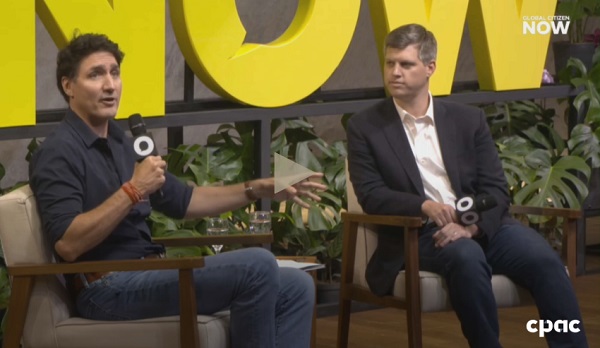
 ESG1 day ago
ESG1 day agoCan’t afford Rent? Groceries for your kids? Trudeau says suck it up and pay the tax!
-

 Daily Caller1 day ago
Daily Caller1 day agoLos Angeles Passes ‘Sanctuary City’ Ordinance In Wake Of Trump’s Deportation Plan
-

 John Stossel1 day ago
John Stossel1 day agoGreen Energy Needs Minerals, Yet America Blocks New Mines
-

 Alberta1 day ago
Alberta1 day agoProvince considering new Red Deer River reservoir east of Red Deer
-

 MAiD2 days ago
MAiD2 days agoOver 40% of people euthanized in Ontario lived in poorest parts of the province: government data
-
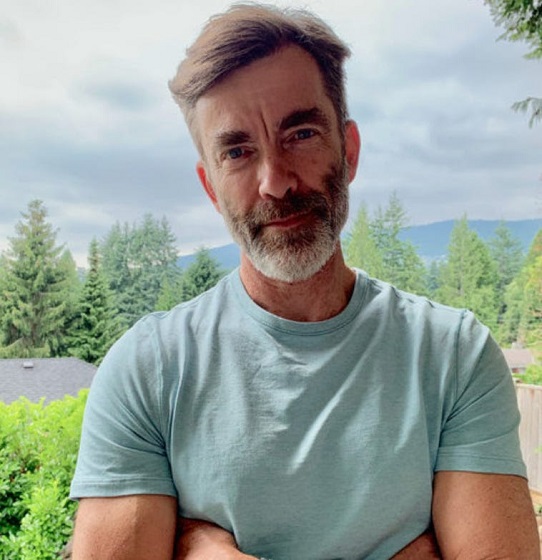
 Addictions1 day ago
Addictions1 day agoBC Addictions Expert Questions Ties Between Safer Supply Advocates and For-Profit Companies






